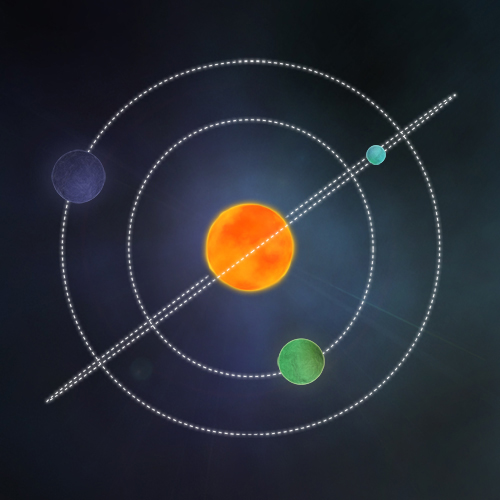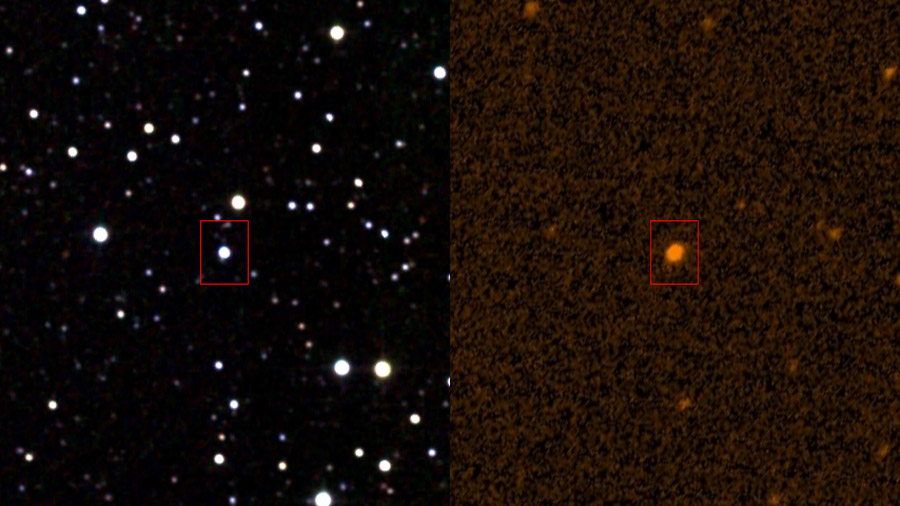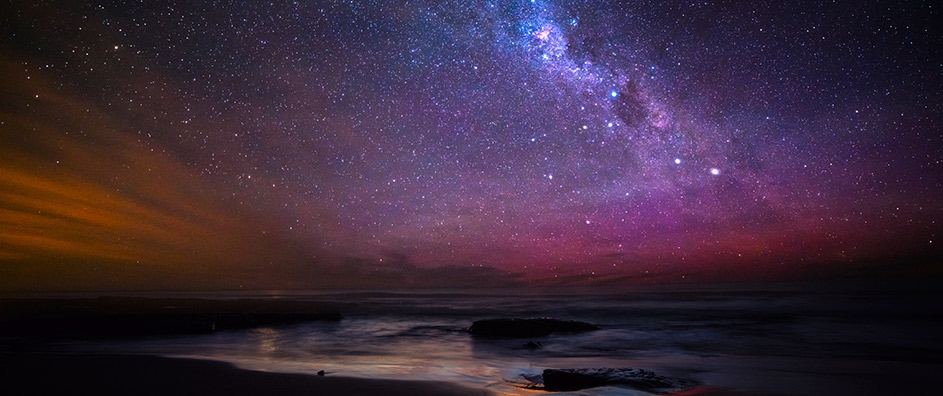The views expressed in our content reflect individual perspectives and do not represent the authoritative views of the Baha'i Faith.
I really love the stars. No, not those kind—the ones from Hollywood, Bollywood or Dollywood—but the ones that shine down from the heavens.
As a young boy I became a dedicated stargazer, spending innumerable hours laying on the ground during summer nights, staring up at the great dome of the universe. I watched in wonder as the stars moved in their stately dance, and wondered endlessly about them, and their solar systems, and the creatures that might populate those planets. To this day, I’ve never gotten over my love of observing the sky and trying to understand its mysteries.
I began to realize, probably at about six years old, that my fascination with the stars and the planets transcended mere astronomy. It seemed to me then—and still does today—that my avocation had some spiritual meaning, some deep mystical import. As I studied the stars I could feel a connection to the Great Beyond, to something much larger and more mysterious than I might ever imagine. That’s why I spent so many nights outside. It gave me some sense of a kinship with the creation, and it expanded my conception of what life might include. It let me gaze into God’s masterpiece.
During my boyhood many centuries ago (just kidding—only one century) we didn’t have the benefit of many science fiction films to spark our imagination. We only had what we could conjure up in our minds. No Star Wars, no Stargate, no Star Trek. We did have Bradbury and Heinlein and Clarke, who wrote books about life among the galaxies, but of course books require imagination. I read those books, and then I went outside and looked at the actual stars to see what I could dream up.
Now, though, I tend to read scientific articles and journals about astronomy. They fire my imagination even more than a good science fiction novel or movie, because they’re based on actual observation.

The Planet Hunters logo
That’s how I came across “Planet Hunters.” Based at Yale University, Planet Hunters asks volunteer citizen scientists to evaluate data from the Kepler Space Telescope. The volunteers comb through records of brightness levels from roughly 150,000 stars, looking for anomalies in the data. They’re searching for “exoplanets”—much too small to see from such great distances, but they do slightly dim the brightness of their suns when their orbit passes between that particular star and our telescopes. Evidence for approximately two thousand exoplanets has emerged, some the approximate size and distance from their star to resemble Earth.
Recently, Planet Hunter astronomers at Yale observed an unusual star, with the catchy name KIC 8462852, that has a strange habit of dimming drastically every few years. No one could figure out why, and no “natural” explanations fit the data, either. Even large planets passing in front of stars only dim the star’s brightness by 1%, and this star often dims by as much as 22%. Tabetha Boyajian, the Yale astronomer who discovered this anomaly, said “It was kind of unbelievable that it was real data. We were scratching our heads. For any idea that came up there was always something that would argue against it.” Boyajian wrote a short journal article about the star’s strange behavior, and published it in the Monthly Notes of the Royal Astronomical Society.
Another astronomer, Jason Wright from Penn State University, studied the Yale data. Wright, well-known in the astronomical community for developing a scientific protocol regarding exoplanets and extra-terrestrial civilizations, came up with a quite remarkable potential explanation: “a swarm of megastructures,” he explained, satellites conceivably outfitted with solar panels to collect energy from the star. Wright told the media: “Aliens should always be the very last hypothesis you consider, but this looked like something you would expect an alien civilization to build.” A huge orbiting structure that blocked its star’s light in this manner, Wright postulates, would obviously indicate an intelligent and technologically-advanced civilization.
Of course, the light from KIC 8462852 takes almost fifteen centuries to reach Earth. That would mean any such civilization built their “swarm of megastructures” at about the time Muhammad appeared in Arabia and Europe began to suffer through the Dark Ages.

KIC 8462852 seen in Infrared and Ultraviolet
KIC 8462852, the only star we’ve ever observed that acts this way, has now drawn the attention of the Allen Telescope Array (ATA), named after Microsoft co-founder Paul Allen, and operated by the University of California’s SETI Institute, which stands for Search for Extra-Terrestrial Intelligence. The ATA, a 42-dish radio interferometer at the remote Hat Creek Observatory in northeastern California, now focuses on this extraordinary star, listening for radio signals. But since the star is so distant—1481 light years away—signals may be too weak to detect.
Does this sound like a science fiction film to you? It does to me, too, but it’s real. This particular star may turn out to have a naturally-occurring explanation, but I realized, as I read about it, that this may be the way we eventually learn we’re not alone in the universe. Instead of meeting ET or having that “first contact” alien-to-human close encounter like they do in the movies, we might continue to increase the strength and sophistication of our telescopes and learn, by carefully studying the stars, that we’re seeing something we don’t expect to see.
Which wouldn’t surprise many Baha’is, since the Baha’i teachings certainly leave the possibility open:
Thou hast, moreover, asked Me concerning the nature of the celestial spheres. To comprehend their nature, it would be necessary to inquire into the meaning of the allusions that have been made in the Books of old to the celestial spheres and the heavens, and to discover the character of their relationship to this physical world, and the influence which they exert upon it. Every heart is filled with wonder at so bewildering a theme, and every mind is perplexed by its mystery. God, alone, can fathom its import. The learned men, that have fixed at several thousand years the life of this earth, have failed, throughout the long period of their observation, to consider either the number or the age of the other planets. Consider, moreover, the manifold divergencies that have resulted from the theories propounded by these men. Know thou that every fixed star hath its own planets, and every planet its own creatures, whose number no man can compute. – Baha’u’llah, Gleanings from the Writings of Baha’u’llah, pp. 162-163.
In this short series of essays on the subject, we’ll look at the potential of life beyond Earth; explore the Baha’i teachings on the stars and the universe; and examine the fascinating intersection between science and religion.
Next: Gaze Upward through Immeasurable Space
















Comments
Sign in or create an account
Continue with Googleor